Sunday, April 20, 2025 at 11 on KPBS 2 / Stream now with the PBS app
“Poisoned Ground: The Tragedy at Love Canal” tells the dramatic and inspiring story of the ordinary women who fought against overwhelming odds for the health and safety of their families. In the late 1970s, residents of Love Canal, a working-class neighborhood in Niagara Falls, New York, discovered that their homes, schools and playgrounds were built on top of a former chemical waste dump, which was now leaking toxic substances and wreaking havoc on their health.
Through interviews with many of the extraordinary housewives turned activists, the film shows how they effectively challenged those in power, forced America to reckon with the human cost of unregulated industry, and created a grassroots movement that galvanized the landmark Superfund Bill.
Related: Your Own Backyard - Poisoned Ground: The Tragedy at Love Canal
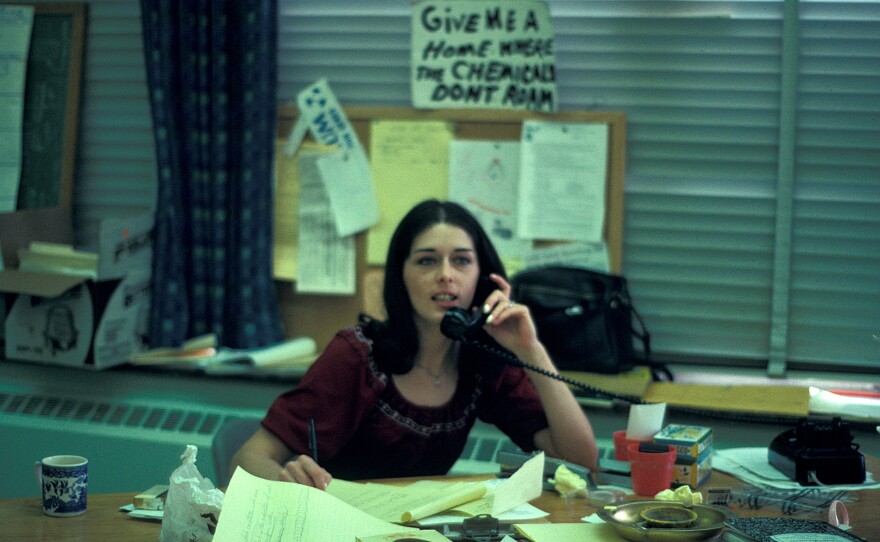
The story of Love Canal began in the late 19th century, when William T. Love, hoping to harness the power of Niagara Falls, began to dig, but later abandoned, an enormous canal. Decades later, in the late 1940s, local company Hooker Chemical decided that Love’s Canal was the perfect site for a waste dump. For nearly a decade, Hooker dumped roughly 22,000 tons of dangerous chemical waste into the defunct waterway, a common disposal practice and one largely unregulated by the local government.
During the post-war baby boom, young families seeking job opportunities in the chemical industry flocked to the area, creating a demand for land for new homes and schools. Hooker Chemical sold its waste dump land to the Board of Education for $1, with a clause exempting them from all future liability. Over the next few decades, a suburban community blossomed around the Love Canal site, with an elementary school and hundreds of homes built on top of the former canal.
By the late 1970s, the persistent smell of chemicals filled the air, and residents noticed sludge seeping into basements, corroded sump pumps, and oily backyard puddles. Children playing in the schoolyard reported chemical burns and rocks that would catch fire when skipped on the water. Most alarming, residents noted troubling health maladies ranging from skin rashes and seizures to miscarriages and birth defects.
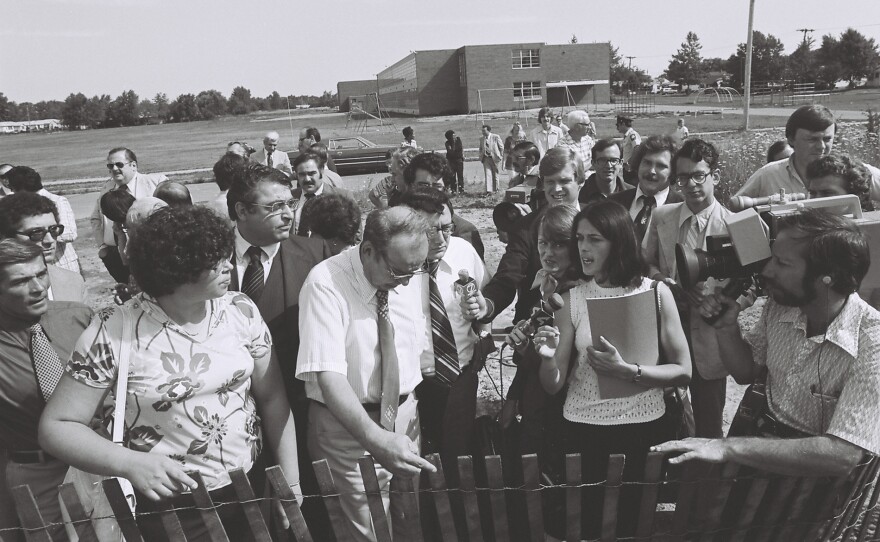
After air and soil tests revealed the presence of dozens of chemicals, panic spread as federal and state agencies scrambled for solutions. The newly-minted Environmental Protection Agency had never dealt with a catastrophe of this scale, and President Jimmy Carter declared a federal state of emergency — the first ever for a man-made disaster. Residents closest to the dumpsite were evacuated, but those farther removed were stuck, with renters unable to afford to leave and homeowners unable to sell their homes.
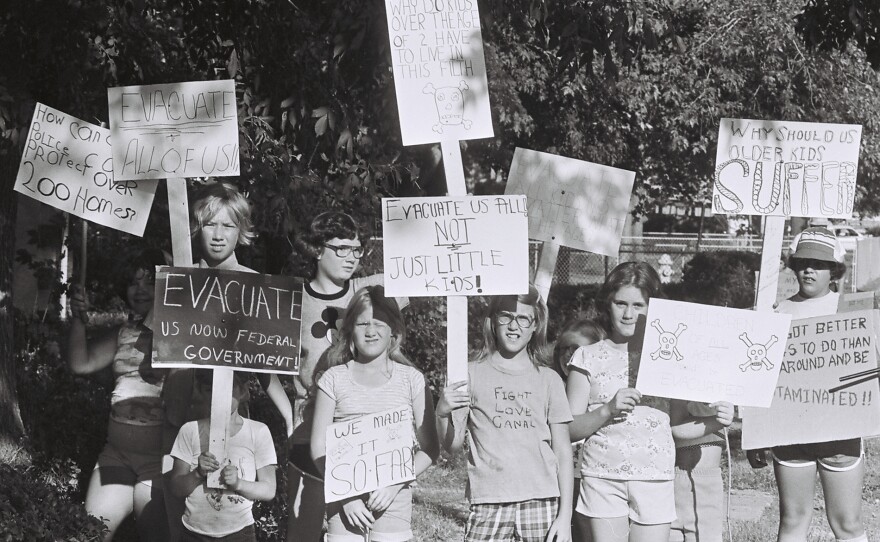
Those left behind were also suffering terrible health effects from the chemicals and banded together. Led by a 27-year-old homemaker named Lois Gibbs, the women advocated for government-funded relocation and medical testing. By the summer of 1978, Love Canal became a full-blown media sensation.
The Love Canal mothers educated themselves on chemical contamination and how to conduct health investigations. Their investigation, which found clusters of illness along old streambeds that intersected the canal, pushed health officials to recognize that the chemicals may have spread further than previously thought.
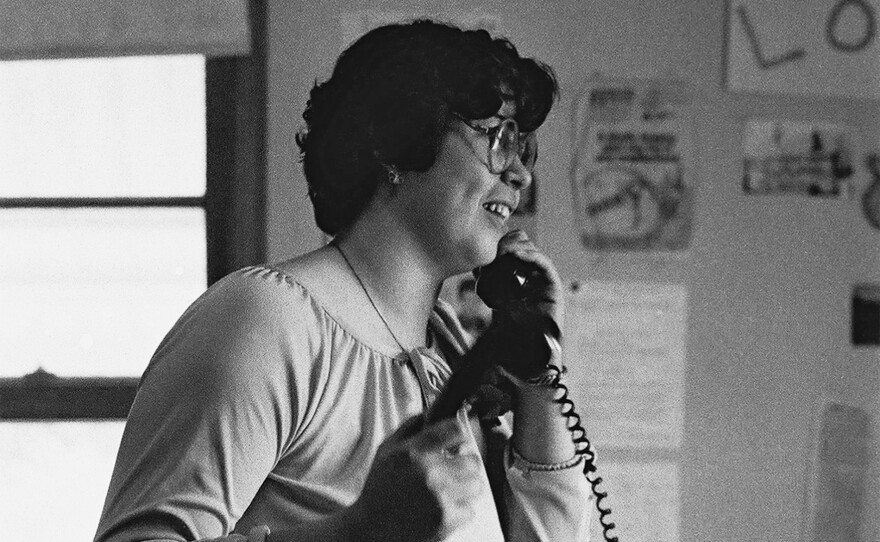
Finally, politicians began taking note of the risk that unregulated industrial practices posed to communities nationwide. Momentum built in Congress for legislation that would force companies dealing in toxic waste to help shoulder the burden of remediating impacted sites.
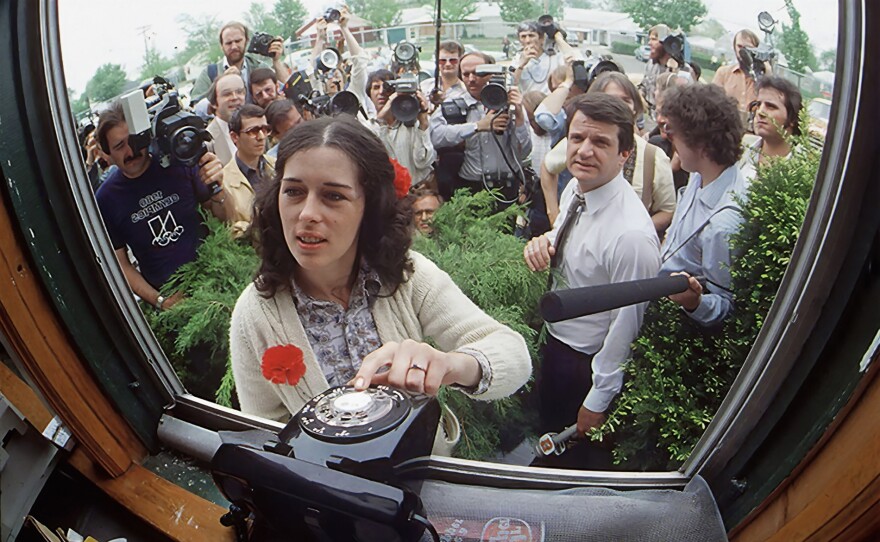
In May 1980, after two years of fighting, the Love Canal saga reached a breaking point when the results of an EPA pilot study indicating widespread chromosome damage were released to the community. Lois Gibbs and the Love Canal mothers held two EPA representatives hostage for several hours, a media spectacle that forced a response from Washington. Days later, President Carter declared a second federal emergency, which made the relocation of 700 remaining families possible. Months later, the Superfund Bill, which gained bipartisan support in Congress with the help of Love Canal, was finally passed into law. Love Canal was the first Superfund site identified for cleanup.
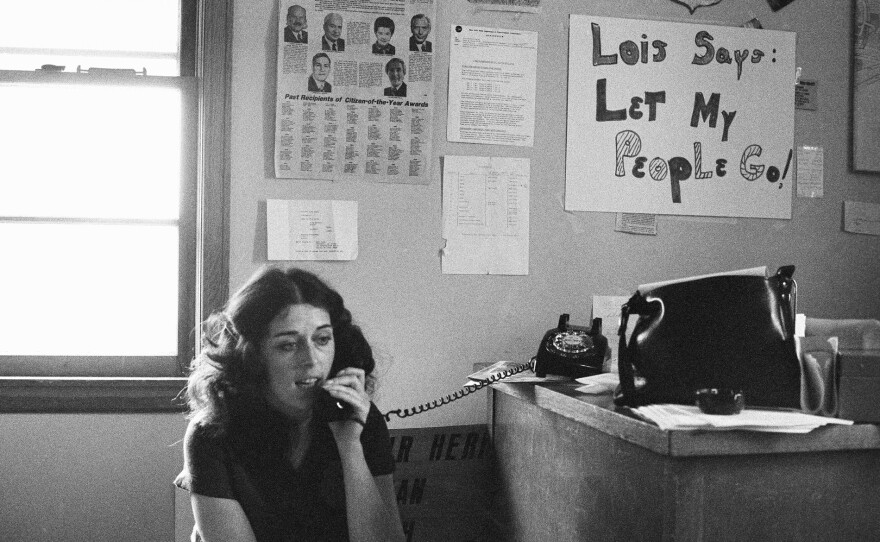
Filmmaker Quote:
“Beyond saving themselves and their families, the Love Canal mothers forced America to reckon with how to balance the needs of the environment and industry,” said filmmaker Jamila Ephron. “Sadly, the larger story of the Love Canal neighborhood is still unfolding, and communities marginalized by class or race often bear the brunt of toxic waste contamination.”
Watch On Your Schedule: AMERICAN EXPERIENCE films stream simultaneously with broadcast and are available on all station-branded PBS platforms, including PBS.org and the PBS App, available on iOS, Android, Roku, Apple TV, Amazon Fire TV, Android TV, Samsung Smart TV, Chromecast and VIZIO. All titles will also be available with closed captioning in English and Spanish.
Participants Featured in the Film:
- Barbara Blum served as Deputy Administrator of the Environmental Protection Agency (EPA) from 1977 to 1981.
- Michael Brown was a Niagara Gazette reporter who covered the Love Canal story. He is the author of "Laying Waste: The Poisoning of America by Toxic Chemicals."
- Bonnie Casper was a Congressional Aide to Congressman John LaFalce, who represented New York’s 36th Congressional District.
- Debbie Cerrillo Curry was vice president of the Love Canal Homeowner’s Association.
- Jannie Freeney was a resident of Griffon Manor, a housing project in Love Canal, who fought for the rights of renters to relocate.
- Lois Gibbs was president of the Love Canal Homeowners Association, leading the successful effort to have government-funded relocation and health testing for outer community residents. She founded and is the former executive director of the Center for Health, Environment and Justice.
- Amy Hay is an associate professor of history at the University of Texas Rio Grande Valley and has written extensively about environmental contamination, including the Love Canal disaster.
- Luella Kenny was a Love Canal resident and activist. Her seven-year-old son became ill with an immune response disease and died in October 1978.
- John LaFalce was a member of the US House of Representatives from 1975 to 2003. His district included the Love Canal neighborhood.
- Stephen Lester was hired by the New York State Department of Health in 1978 to serve as a technical adviser to Love Canal homeowners. He is the Science Director of the Center for Health, Environment and Justice.
- Richard Newman is a history professor at the Rochester Institute of Technology and author of "Love Canal: A Toxic History from Colonial Times to the Present."
- Keith O’Brien is a New York Times bestselling author and award-winning journalist. His books include "Paradise Falls: The True Story of an Environmental Catastrophe."
- Barbara Quimby (deceased) was a Love Canal resident and activist. Her daughter was born with congenital disabilities.
- Marie Rice was a reporter at WIVB-TV in Buffalo, New York, for 27 years and covered the Love Canal disaster extensively.
- Jennifer Thomson is the National Endowment for the Humanities Chair in the Humanities and associate professor of history at Bucknell University. She has written several articles about the Love Canal disaster and is the author of "The Wild and the Toxic: Health and American Environmental Politics."
- Charles Warren is a former regional administrator for the EPA. Currently, he is the chairman of the Environmental Group at the law firm of Kramer Levin Naftalis & Frankel.
- Additional residents of Love Canal featured in the film include Ernie and Patti Grenzy, Carol Jones, Grace McCoulf, and Michael Tolli.
Credits: Written, Produced and Directed by Jamila Ephron. Editor: Brian Funck. Associate Producer: Emily Doyle. Archival Producer: Zoë Kase. AMERICAN EXPERIENCE is a production of GBH Boston. Executive Producer: Cameo George.





